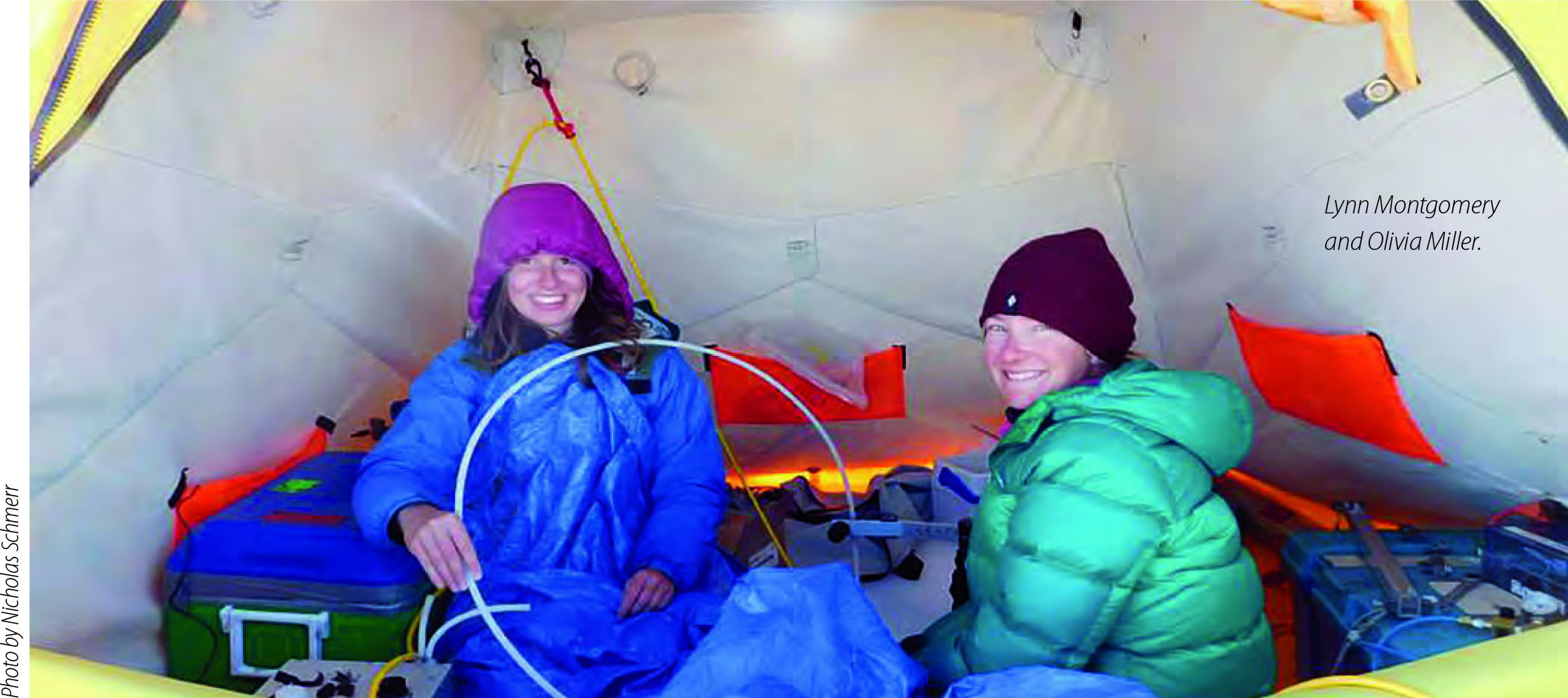By Paul Gabrielsen with Mahala Kephart | https://www.cmes.utah.edu/
The Greenland ice sheet is 1,500 miles long and nearly 700 miles wide, covering about eighty percent of the island; the ice is up to two miles thick. In eastern Greenland, where University of Utah scientists are still studying this vast ice sheet, the mean temperature is about -25 degrees F.
This remote and very cold place is home to a baffling puzzle. In 2011, a team of researchers led by Dr. Richard Forster of the University of Utah’s Department of Geography were conducting studies that involved drilling ice cores and measuring their volume and mass. “We were shocked,” says Forster, “when we pulled up an ice core and there was liquid water just gushing out of it.”
Why would water exist – unfrozen, trapped underneath a thick ice sheet – in one of the coldest places on the planet? Trying to answer that question is how a collaboration with researchers from the Department of Geology & Geophysics, including Professor Kip Solomon and graduate student Olivia Miller, and funded by the National Science Foundation, was formed.
To say their field area, which is more than an hour’s heli-copter flight from the village of Kulusuk, on the eastern coast of Greenland, is rugged is a gross understatement. While in the field, scientists like Forster, Miller, and Solomon live in tents on the ice, sleeping at night with their satellite phone batteries, equipment, and samples that cannot freeze tucked deep into their parkas and sleeping bags.
But during their active research time in the daylight hours, these scientists patiently drill boreholes into the ice and send probes deep into the snow. They’ve poured special fluorescent dyes onto the surface of the snow to see how long it takes to percolate to the aquifer below (about two days) and they’ve poured dyes into the aquifer to try to measure other aspects of how it behaves.
They have, in essence, completed a map of this huge aquifer of unfrozen fresh water that is between 60 and 70 feet thick. That aquifer is below the fir (the snow – ice porous mixture that is 60 to 120 feet thick) and above the solid ice that extends to the bedrock, some 1000s of feet below the surface. “This aquifer,” notes Miller, “stays liquid year-round, even through the winters.”
Solomon’s team suspects the snow on top of the ice sheet acts like a heavy, warm blanket (warm for Greenland!). “What seems to be happening,” Solomon notes, “is that this warming in the summer melts the snow, and that water percolates down to the aquifer, which is deep enough to be insulated from the winter cold.”
Even if that turns out to be the explanation, some big questions are still on the table.
“The big question,” Miller said, “is how much of this water is going into the ocean, and how fast is that happening.” Is the aquifer inside the ice a symptom of climate change? Or did it develop even before modern-day warming began? Could the fresh water found in the ice play a role in speeding up the meltdown and the rising of sea-levels?
“If this water gets to the base of the ice sheet, it could speed up the glaciers and then they would deliver more ice to the oceans – and that would increase the rate of sea-level rise,” Solomon said. “There’s lots of evidence that this part of the world is warming quite dramatically. I don’t believe the sky is falling, but we need to understand the role that this mechanism has in the melting of the Greenland ice sheet. We previously just didn’t know that this reservoir of fresh, unfrozen water even existed.

